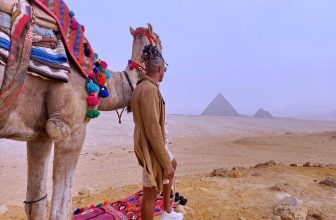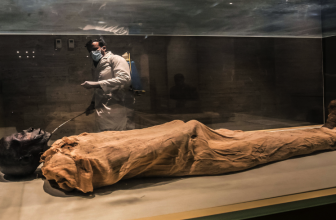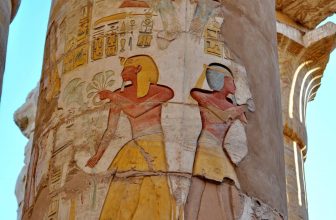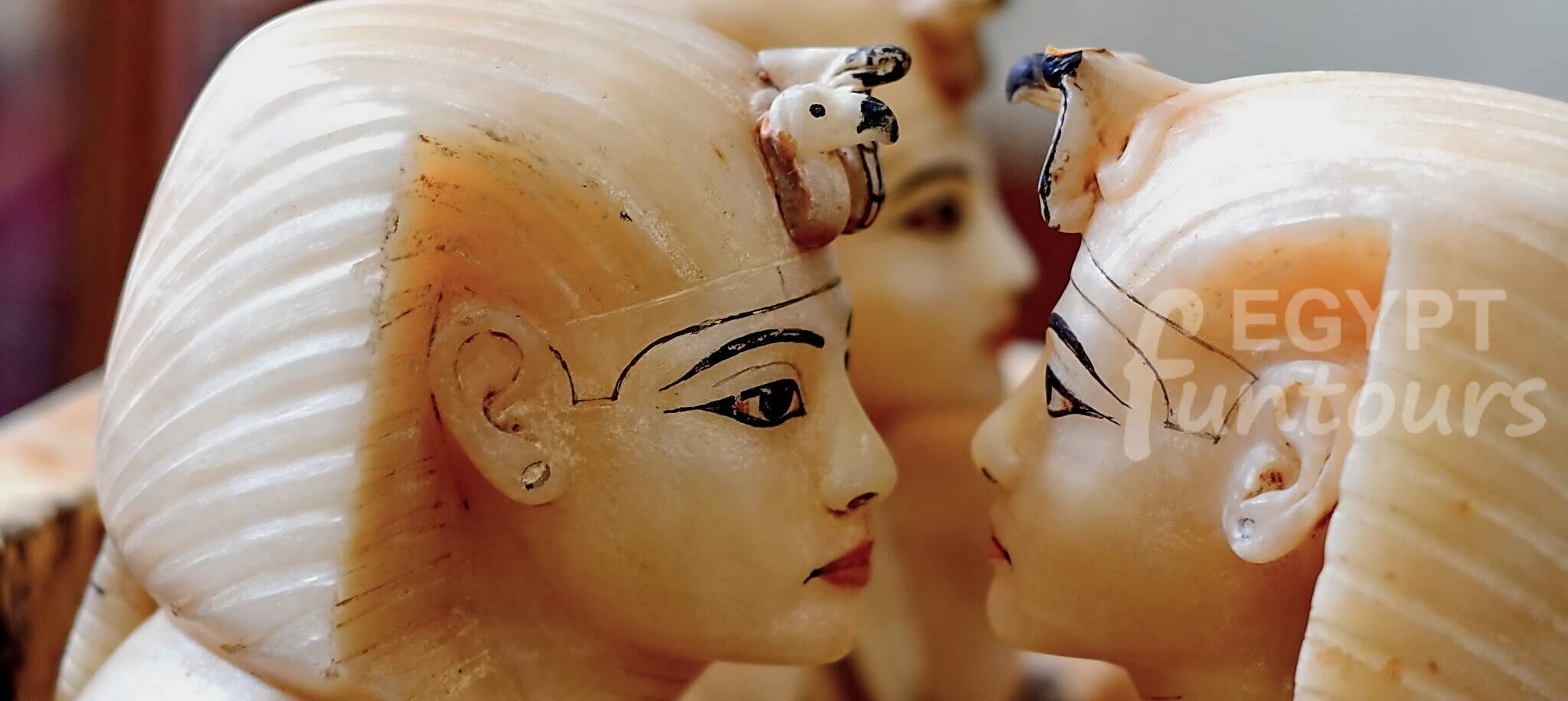Tour Details:
- Duration: 3 Days / 2 Nights
- Location: Siwa Oasis
- Availability: Available Everyday
- Tour Type: Private
Siwa Oasis Desert Adventure Tour for 3 Days and 2 Nights from Cairo
The Siwa Oasis Tour, which lasts three days and two nights and departs from Cairo, covers the highlights of the oasis, including natural lakes, ancient Berber communities, natural springs, and ancient monuments. Explore the oracle temple of Amun, the natural spring of Cleopatra, the ancient village of Shali, natural salt lakes, the mountain of the dead, Fatnas Island, and the Great Sahara sand sea, and swim in crystal pure lake water in just three days.
Tour Itinerary:
Siwa Oasis Tour: Day 1: Cairo | El Alemin | Matrouh-Siwa
We will pick you up from your Cairo or Giza hotel at 5:00 a.m to start our Siwa Oasis Tour. We recommend having a breakfast box from your hotel because of the early departure. Then we begin our journey to El Alamein (distance: 259 kilometers). We pause for a coffee break along the route. We arrive at El Alamein at about 8:30 a.m.
El Alamein was in charge of the North African coast, which provided access to all of Egypt and trading routes to the Far East via the Red Sea and the Indian Ocean. The Axis forces intended to rule Egypt during WWII to cut off Britain’s maritime access to its colonial empire, which the British desperately needed to safeguard. The continuous combat began in 1940 with the Italian invasion of Egypt via Libya, and it was fought near the coastal town of Al Diffa.
Museum of El Alamein: For anybody interested in war memorabilia, there is a modest El Alamein museum on the north side of the road, roughly 1 mile west of the British memorial. It is well worth a visit. It was built in 1965 from combat debris and features uniforms, weapons, flags, and other military memorabilia. Photographs and combat places are among the exhibits.
El Alamein War Cemetery: Sir Herbert Worthington designed it, and the British War Graves Commission in Cairo maintains it. Here, 7,367 men from the United Kingdom, New Zealand, Australia, South Africa, Greece, France, India, and Malaysia are buried in individual graves. In comparison, 11,945 men whose bodies were never found are honored in the cloister that precedes the graveyard.
Individual graves, each topped with a white marker, are located beyond the cloister. Approximately 815 servicemen were identified and their names are written above the graves.
The German War Memorial: The German war monument is a solitary octagonal edifice completed in 1959, three kilometers west of the Italian marking, that faces the sea and is modeled after the castle del Monte. The monument holds the corpses of 4280 German troops, with a spectacular golden mosaic at the entry and a modest chapel to the right of the entrance where family and friends memorialize the deceased with wreaths, photographs, and memorial ribbons.
The Memorial to Italians: El Alamein’s greatest structure is the elegant white marble Italian Memorial. It was created by Paolo Caccia dominoni, who served at El-Alamein and authored a book about it and stands 5 kilometers beyond the German Memorial. There is a modest museum near the entrance and an inscription in the church (To 4800 Italian soldiers, sailors, and airmen, the desert and the sea did not return 38,000 who are missing).
Light lunch will be served on the way.
Enjoy the sunset at Fatnas Lake: Fatnas is a small island in Birket Siwa that can be reached by foot or bicycle. It is a lovely site to relax and watch the sunset, with Gebel Bayda and Hamra forming the western backdrop. A stroll around the Garden reveals a wide range of plants, including banana, date, and olive trees.
Dinner will be served in a restaurant in Siwa.
Overnight in Ghaliet Ecolodge: Ghaliet is a one-of-a-kind SPA Ecolodge near Amoun Temple and Alexander, Siwa Oasis’ famous oracle. It was created among palm palms and constructed by nature. While at Ghaliet, you may sense the antiquity and amazing old legends of Alexander the Great. Nature, organic design, organic food, and various wellness programs are all available. The eco-lodge comprises 12 comfortable rooms, each with its individuality and atmosphere. You may remain in the higher rooms, which have a translucent glass ceiling that makes you feel as if you’re sleeping in heaven. In the bottom rooms, you may also enjoy the unique outdoor seclusion of their private backyard.
Siwa Oasis Tour: Day 2: Camping in the desert of Siwa
Breakfast is served at the hotel. The hotel will pick you up at 7:00 a.m. You’ll see today’s Siwa attractions, starting with Alexander the Great Temple, also known as the Oracle Temple. Alexander the Great is said to have sought proof from the Siwan oracle that he was the son of Zeus/Amun. After a long journey across the desert, the Greek god of gods and his retinue arrived at Siwa Oasis.
After that, head to the salt lakes. You float because the salty water lifts you above the water. You don’t have to be a great swimmer to participate. When swimming, use caution and avoid allowing the water to approach your eyes. because it is extremely unpleasant. Choose a crystal lake from the many available. When you get to the lakes, keep looking for the purest one. After swimming in the lake, bring a bottle of mineral water to shower with. The hyper-salinity qualities of the salt lakes are comparable to those of Jordan’s Dead Sea. This implies that the lakes have significantly better healing capabilities than typical saltwater. In either event, you’ll have a fantastic swim!
We leave at 11:00 a.m. for (Cleopatra’s bath)The Sun Spring. Travelers to Siwa have noticed it, and tradition has it that Cleopatra bathed here.
Then go to the Umm Ubaydah or Amun temple, which is only 200 meters away from the Temple of the Oracle and was built by Pharaoh Nectanebo of the 30th Dynasty. Due to the dynamiting of this edifice in 1896 by an Ottoman administrator in search of building materials, it was nearly demolished. All that is left to be seen is an engraved wall. Scholars have inferred that the temple was built by pharaoh Nectanebo of the 30th Dynasty, based on previous drawings by pioneer explorers.
Noon (Taste the Siwan lunch) at Abdo restaurant in Siwan.
Then you’ll go on a desert adventure by exploring the Great Sand Sea. by 4×4 Jeep and Enjoying sandboarding – The greatest dunes for sandboarding in Egypt may be found near Siwa Oasis in the Great Sand Sea.
Visit Bir Waheed, a hot and cold spring. Later, we have some traditional Bedouin tea as the sun sets, and then spend the night in a desert camp with a bbq dinner.
If you choose to stay in a hotel rather than at the camp, that option is also available. In Siwa, we have some lovely ecolodges.
Siwa Oasis Tour: Day 3: Cairo, Siwa, Marsa Matrouh
Explore Siwa: Breakfast will be served at 7:00 a.m. at the camp, followed by a drive back to the Siwa Oasis.
Discover Shali Fortress/settlement: Our Siwa Oasis Tour starts at The Shali Fortress which was erected on a hill behind a protective wall that was originally pierced by a single gate, and the maze of mud-brick buildings that make up the Fortress served the residents of the oasis for over eight centuries. The residents were forced to live in cramped quarters and share their livestock, which was herded into the stronghold each evening. Rain has sadly proven to be more detrimental to the castle than any human invaders. For nearly 800 years, the stronghold, which was erected in the 13th century, functioned as the heart of Siwan life. Many of the dwellings in the citadel have been renovated, and some have even been repurposed into local guesthouses.
Then travel to the Mountain of the Dead, a conical mountain located slightly more than a kilometer north of Shali. At Gebel Al – Mawta, tombs from the twenty-sixth Dynasty, Ptolemaic, and Roman eras are carved into the mountainside. There are four tombs worth seeing. The most magnificent tomb in Siwa Oasis is Si Amun Tomb. The tomb has an image from the Egyptian pantheon, featuring an exquisite painting of the goddess Nut standing beneath a sycamore tree. Si Amun appears to have been a rich Egyptian, maybe of Greek heritage, but a devotee of traditional Egyptian beliefs.
After that, travel to Cairo, stopping in Marsa Matrouh for lunch. Marsa Matrouh, Egypt’s Mediterranean coast, is a must-see. Many say that Cleopatra herself bathed in the calm waters of Marsa Matrouh, which have sandy white beaches and crystal blue seas.
Lunch will be provided in Marsa Matrouh’s Magdy restaurant, which specializes in seafood.
Then return to Cairo by car. At 20:00, we arrive in Cairo.
Note: If you need to make any modifications to the itinerary, please let us know.
This is a private vacation, so you can request any changes you like, and we’ll do our best to accommodate you.
Tour Price
Prices are per person and are in U.S. dollars.
Price Classification:
- USD 450 per person for a private journey in a private car for two people.
- USD 400 per person for a private journey for three people in a private car.
- USD 345 per person for a private journey for four people in a private car.
- USD 350 per person for a private excursion for 5 people in a private car.
- USD 350 per person for a private excursion for 6 people in a private car.
- USD 350 per person for a private excursion for 7 people in a private car.
- For a solo tourist, a personal journey is available. USD 755 for a private car
Method of Reservation:
1- Payment is made on the spot during the journey.
2- Down Payment to be Paid Online
(Rate is fixed all year round (Except Mid-Year school vacations, Xmas, New Year & Easter)














